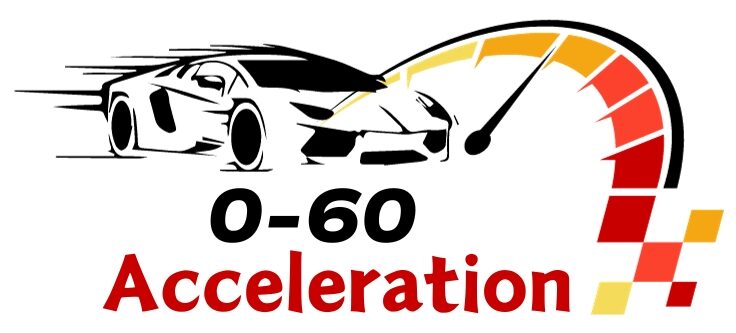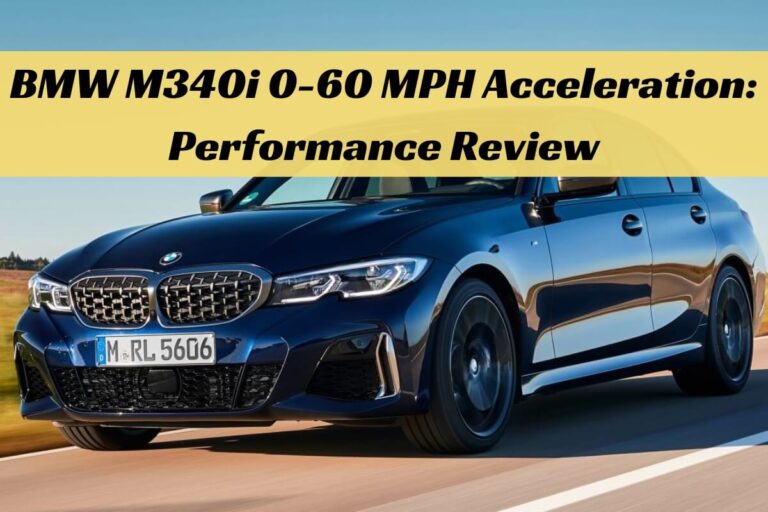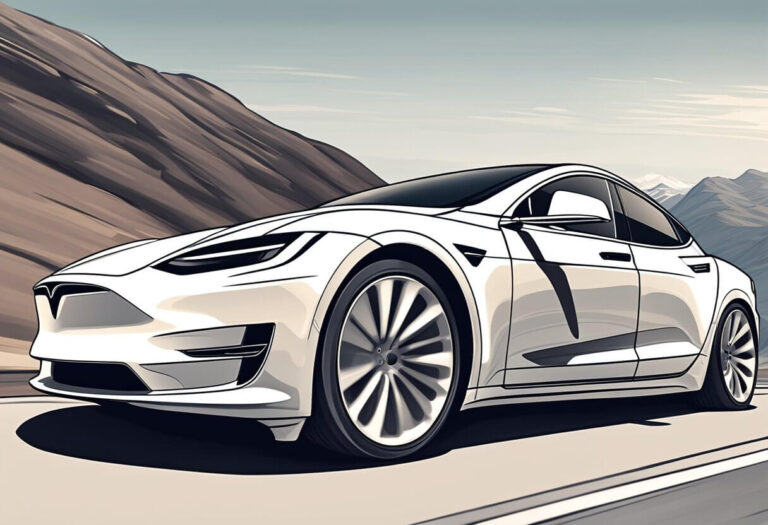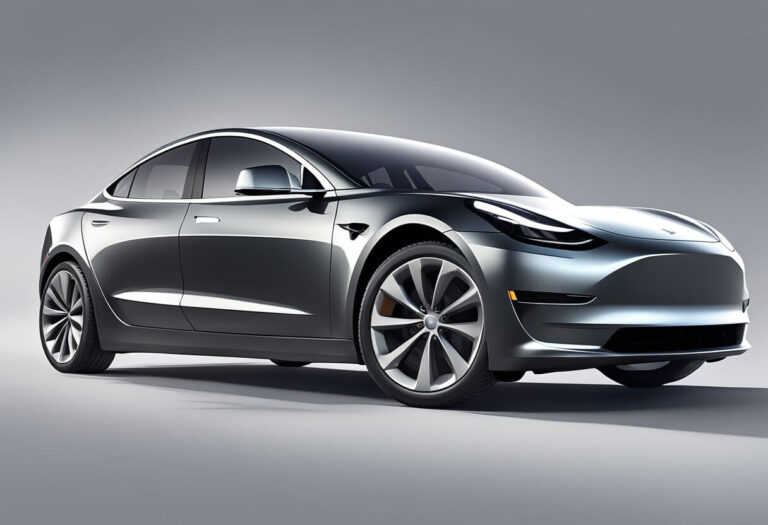
There’s an undeniable thrill that comes from slamming the accelerator and experiencing rapid forward thrust. For driving enthusiasts, few vehicles deliver that adrenaline rush quite like the legendary BMW M3. This high-performance sports sedan has built a reputation for blistering acceleration, thanks to its powerful engines and motorsport-inspired engineering.
In this comprehensive guide, we’ll take an in-depth look at the 0-60 mph times of the current BMW M3 range, exploring what makes this car such a formidable performer when it comes to straight-line speed. Whether you’re a diehard M3 fan or simply looking for a vehicle that can utterly demolish stoplight grand prix, this post has got you covered.
The BMW M3 – A Performance Powerhouse
Before we dive into the acceleration figures, it’s important to understand what makes the BMW M3 such a special car. This isn’t just another sports sedan – it’s a vehicle that has been purpose-built for driving thrills, with a lineage that traces back to the legendary race-bred E30 M3 of the 1980s.
The current G80 generation M3 stays true to its roots, packing a ferocious 3.0-liter twin-turbocharged inline-6 engine that churns out a whopping 473 horsepower and 406 lb-ft of torque in base form. Step up to the M3 Competition or the even wilder M3 CS, and you’re looking at 503 hp and 543 hp respectively. Coupled with a slick-shifting manual transmission (or a lightning-quick automatic), rear-wheel drive or available xDrive all-wheel drive system, and a finely-tuned chassis, the M3 is engineered from the ground up to deliver scintillating acceleration.
Acceleration Times Across the M3 Range
So, what kind of 0-60 mph times are we talking about here? Let’s break it down by variant:
- Base 2024 BMW M3: 0-60 mph in 4.1 seconds
- M3 Competition: 0-60 mph in 3.8 seconds
- M3 Competition xDrive (AWD): 0-60 mph in a blistering 3.4 seconds
- M3 CS: 0-60 mph in only 3.2 seconds!
What’s even more impressive is that these are just the manufacturer-claimed figures. In real-world testing by reputable automotive publications, the M3 has proven to be even quicker, with some models clocking 0-60 mph sprints in the 2.7-2.8 second range!
As for the quarter-mile times, you can expect the M3 Competition xDrive to rip through the standing quarter in around 11.5 seconds at over 120 mph. Not too shabby for a sedan!
| Model | 0-60 mph | 1/4 Mile |
|---|---|---|
| Base M3 | 4.1 sec | ~12.2 sec @ 115 mph |
| M3 Comp | 3.8 sec | ~11.8 sec @ 119 mph |
| M3 Comp xDrive | 3.4 sec | ~11.5 sec @ 122 mph |
| M3 CS | 3.2 sec | ~11.2 sec @ 125 mph |
*Estimated times based on testing data
What Makes the M3 So Quick?
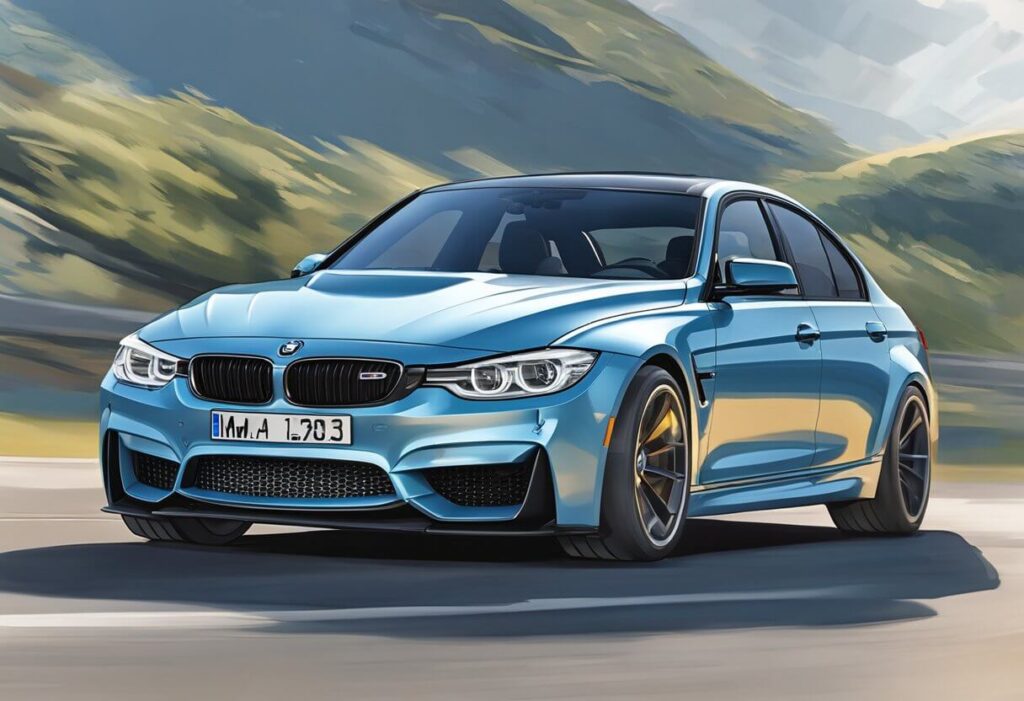
You’re probably wondering what sort of engineering wizardry allows the BMW M3 to accelerate with such ferocity. Well, beyond that powerful engine, there are several other key factors at play:
High-Performance Transmissions: Whether you opt for the slick-shifting 6-speed manual gearbox or the lightning-fast 8-speed automatic, the M3’s transmissions are designed to get every last ounce of acceleration out of that inline-6 engine. Features like auto rev-matching, quick-shift capabilities, and multiple driving modes allow you to stay in the sweet spot of the powerband.
Exceptional Traction Management: With standard rear-wheel drive or the available xDrive AWD system, the M3 puts all that power to the ground in an extremely effective manner. Advanced traction aids like M-tuned Dynamic Stability Control and an electronic M-locking rear differential help maximize grip and prevent excessive wheel slip during hard launches.
Dedicated Launch Control Software: All modern M3 models come equipped with a launch control system that allows for optimum acceleration from a standing start. Engaging this feature enables the powertrain and stability systems to work in harmony, laying down that power in the most efficient way possible.
Lightweight Construction: Despite being a relatively large vehicle, the extensive use of aluminum, carbon fiber reinforced plastic, and other lightweight materials helps keep the M3’s weight in check. Less mass to move equals even quicker acceleration.
Aerodynamic Efficiency: The M3’s sleek, sculpted body isn’t just about looks – it’s also designed to cheat the wind and reduce aerodynamic drag at speed. Less drag means less power is required to overcome air resistance during acceleration runs.
Comparing to the Competition
While the BMW M3’s acceleration stats are certainly impressive, it’s not the only performance sedan in its class. How does it stack up against key rivals from Audi, Mercedes, Cadillac and others?
In short, the M3 absolutely dominates its segment in terms of straight-line speed. Its closest competitors, vehicles like the Audi RS5, Cadillac CT4-V Blackwing and Mercedes-AMG C63, all trail slightly behind with 0-60 mph times in the mid-to-high 3-second range. And when you factor in the M3 Competition trims and the ultra-high-performance M3 CS, there’s really no touching this Bavarian bruiser down the quarter mile or in a quick highway pull.
What makes the M3’s acceleration feats even more remarkable is that it achieves this level of performance as a relatively large, 4-door sedan. Key rivals like the RS5 and CT4-V are smaller, more lightweight coupes or compacts. The M3’s ability to deliver supercar-like thrust while still retaining a spacious cabin and real-world daily drivability is part of what makes it so special.
Owners’ Real-World Experiences
Of course, numbers on a spec sheet only tell part of the story. What do actual BMW M3 owners have to say about how this car accelerates in the real world?
Feedback from the enthusiast community is overwhelmingly positive, with many reporting acceleration times that outperform BMW’s already impressive claims. Numerous owners have clocked 0-60 mph runs well into the 3-second range, even in “base” M3 models – feats that put the car’s acceleration on par with some of the world’s fastest supercars not too long ago.
Beyond the raw numbers, owners rave about the feeling of thrust and the addictive nature of the M3’s ruthless acceleration. Words like “relentless,” “brutal” and “mind-bending” are common descriptors. The whine of the twin-turbo inline-6 spooling up, the fierce bark from the exhaust on upshifts, and the sensation of being pinned back in the seat are all frequently mentioned highlights.
On the flip side, some owners do note that all that power and grip can make for some hairy traction issues if you don’t treat the accelerator pedal with respect, especially in the rear-wheel drive models. More than a few M3 pilots admit to finding themselves sideways without much provocation in the higher-output versions. But in the right hands, most agree this car’s acceleration simply has few peers in the sports sedan arena.
Unlocking Even More Performance
For some diehard speed junkies, even the bonkers acceleration provided by the M3 CS just isn’t enough. Thankfully, with the right aftermarket modifications, it’s possible to extract even more ferocious straight-line performance from these Bavarian beasts. Here are some of the top modifications recommended by experts:
Engine/ECU Tuning: By remapping the engine computer with aftermarket software, tuners can safely unlock extra power that was left on the table from the factory. Reputable BMW tuners routinely get M3s up to 550-600 horsepower just from ECU tuning alone.
Cold Air Intakes: Swapping out the restrictive factory airbox for a less-restrictive cold air intake can allow more air to feed that hungry inline-6, further enhancing throttle response and top-end power delivery.
Exhaust Systems: Similarly, an aftermarket exhaust system can help the M3’s turbocharged engine breathe better by reducing back-pressure in the exhaust path. A freer-flowing exhaust also enhances the engine’s aural thrills with a richer, more aggressive exhaust note.
Suspension Upgrades: While bolt-on power mods are great for boosting acceleration, upgrading the M3’s suspension is also highly recommended if you want to put that extra grunt to the ground effectively. Coilover kits, stiffer sway bars, and stickier tires can work wonders in improving traction off the line.
Bolt-On Aero Parts: For the truly obsessed, adding functional aerodynamic aids like splitters, canards and even rear wings can help reduce drag and increase downforce, enabling even quicker acceleration times at higher speeds.
With a full complement of engine performance, suspension and aerodynamic upgrades, it’s not uncommon for tuned M3s to dip well into the 2-second range for 0-60 mph sprints. But be warned – this level of performance does start to make street driving a bit…challenging.
The Daily Driving Experience
Speaking of real-world drivability, how practical and livable is a vehicle with the prodigious accelerative capabilities of the BMW M3? That’s always the big question whenever you blend supercar-levels of speed with a vehicle that needs to function as a daily driver.
The good news is that despite its mind-bending performance potential, the M3 still delivers a surprisingly supple and civilized driving experience when you’re not burying the accelerator pedal. The well-tuned suspension can still soak up road imperfections without becoming overly harsh, and the cabin remains a quiet, tech-laden place to spend time thanks to solid insulation and high-end materials.
Of course, the secret to maintaining some sense of livability is keeping your right foot in check. With peak torque arriving around just 2,600 rpm, it’s all too easy for a momentary lapse in throttle discipline in the M3 to instantly summon massive thrust that you may not have intended. But keep the engine revs and speeds sane, and the M3 can easily settle into being a comfortable daily driver.
The downsides? For some owners, even the “slowest” M3 can feel too highly-strung for their tastes, with a ride that’s overly stiff and an engine note that’s too raucous over extended highway drives. The brutal acceleration also means you’ll be frequenting gas pumps at an alarming rate. And of course, there’s always the temptation to “have a go” that bit of quick on-ramp pull, even if rationale is advising against it.
Other Quick Alternatives
If the BMW M3’s dizzying acceleration capabilities seem a bit too much for your street driving needs, there are some other solid sports sedan options that still deliver thrilling performance, just with slightly more subdued straight-line pace:
Kia Stinger GT 0-60 mph in the mid-4 second range Twin-turbo V6 power from just under $50k
Alfa Romeo Giulia Quadrifoglio 0-60 mph in 3.8 seconds Ferrari-derived twin-turbo V6, gorgeous Italian style
Genesis G70 3.3T 0-60 mph in 4.5 seconds Loads of value, great chassis tuning from the Koreans
Lexus IS 500 F Sport 0-60 mph in 4.4 seconds Unique naturally-aspirated V8 power, Lexus refinement
Of course, if you simply must have the absolute sharpest acceleration possible in a sport sedan package, there are also some even harder-core alternatives to the BMW M3:
Cadillac CT5-V Blackwing 0-60 mph in 3.4 seconds Supercharged 668 hp V8, six-speed manual
Tesla Model 3 Performance
0-60 mph in 3.1 seconds Savage electric acceleration and tech, minus the petrol thrills
Porsche Panamera Turbo S 0-60 mph in 2.8 seconds Insane twin-turbo V8 makes this a ballistic luxury missile
So while the BMW M3 may reign supreme in its competitive set for acceleration, there are entertaining options for every flavor of speed-freak if it proves too much of a good thing.
Maintaining Peak Acceleration
With great power comes great responsibility for maintenance – that’s certainly true when it comes to keeping your BMW M3 accelerating at its fullest potential. While these performance machines are engineered to handle abuse, there are some key areas that require diligent upkeep to avoid sapping acceleration over time:
Transmission Services: Whether you’ve got the manual or automatic gearbox, staying on top of transmission fluid services at the recommended intervals is critical. Lazy shifts or slippage will absolutely kill your 0-60 times.
Tire Condition: Having a healthy set of sticky performance tires makes a massive difference to the M3’s ability to put its power down cleanly off the line. Don’t let them go bald!
Spark Plug Changes: Those six spark plugs work overtime to keep the M3’s engine firing on all cylinders. Following the maintenance schedule for new plugs avoids misfires that can zap power.
Brake Part Condition: While not directly acceleration-related, having worn brake pads or warped rotors can indirectly impact accelerative performance due to increased driveline shudder. Don’t neglect those stoppers!
Alignment/Suspension Checkups: Even a slight alignment or suspension issue can wreak havoc on traction and launch capabilities in a car this powerful. Annual inspections can catch problems early.
Air Filter Changes: Keeping the engine breathing cleanly is key to maintaining peak horsepower levels, so fresh air filters are a must.
In general, following all recommended services to a T and addressing any issues early before they snowball is the best approach to keep your M3 accelerating with maximum ferocity mile after mile.
FAQ
Is the manual M3 just as quick as the automatic?
In short bursts like 0-60 mph runs, the automatic M3 models do have a slight edge thanks to the rapid-fire gearchanges enabled by their advanced transmission tech. However, the manual M3 is so well-geared and makes its power so readily available that in real-world tests, experienced drivers have proven able to keep pace with the auto surprisingly well. It really comes down to your level of shifting skill!
How much faster is the AWD xDrive model?
The M3 Competition xDrive with its grippy all-wheel drive system absolutely demolishes the rear-wheel drive variants in straight line acceleration. BMW’s own claims have the xDrive running a high 3-second 0-60 mph time versus mid-4 second runs for the rear-drivers. Real-world testing indicates the gap could actually be closer to a full second or more in ideal conditions. So if maximum traction for acceleration runs is your goal, xDrive is the way to go.
What’s the actual top speed?
From the factory, all M3 models are electronically limited to a top speed of 155 mph. However, by optioning the M Driver’s Package, this limiter is raised to 180 mph. With some aftermarket work to remove the electronic nannies entirely, tuners have actually been able to eke out top speeds in the 190-200 mph range from highly modified M3 test mules.
Other common M3 acceleration questions answered:
Does wheel size impact acceleration?
Yes, larger wheel/tire packages can slightly hamper 0-60 times by adding more unsprung, rotational mass.
Do fuel grades matter?
Using premium 93 octane fuel as required provides the optimal acceleration versus lower octanes.
What about carbon ceramic brakes?
These lightweight brake packages slightly reduce unsprung weight to improve response, but the benefits are marginal.
Can you launch the M3 in manual mode?
Yes, all M3s come with dedicated launch control functionality to optimize hard accelerations from a stop.
Conclusion
There’s no denying the thrill and appeal of the BMW M3’s stupendous straight-line acceleration capabilities. With its potent powertrains, advanced traction management systems, and obsessive focus on delivering explosive forward thrust, this iconic sport sedan simply demolishes most of its competitive set in the sprint to 60 mph (and well beyond).
From the relatively tame but still lightning-quick base M3, all the way up to the savage, supercar-baiting acceleration of the M3 CS, this performance icon has a variant to satiate every level of speed addiction. Whether you’re an all-out straight-line junkie or someone who prefers their speed with a dose of daily driving civility, the M3 range delivers an intoxicating blend of power and poise.
Of course, with great acceleration comes great responsibility for keeping the M3 in proper operating condition. Frequent maintenance, quality tires, and prudent driving techniques are musts to avoid prematurely burning out this Bavarian beast’s impressive performance capabilities. There’s also the simple question of whether the M3’s explosive thrust is too much for some drivers or situations – a fine line that even seasoned pilots can find themselves crossing unexpectedly.
But for those who crave accessing the upper echelons of attainable acceleration performance in a package that still boasts surprising practicality and daily driver credibility, the BMW M3 remains in a class by itself amongst sport sedans. It’s a true “have your performance cake and eat it too” proposition – a winsome combination of scintillating speed and real-world sensibilities that few other vehicles can match.
So whether you find yourself slipping behind the wheel of an M3 in search of adrenaline-soaked stoplight runs or chasing lap times on the circuit, just remember to savor every single hard-charging launch and gear change. After all, accessing this level of easily summonable acceleration is a privilege. And the M3 ensures it’s one that never, ever gets old.
